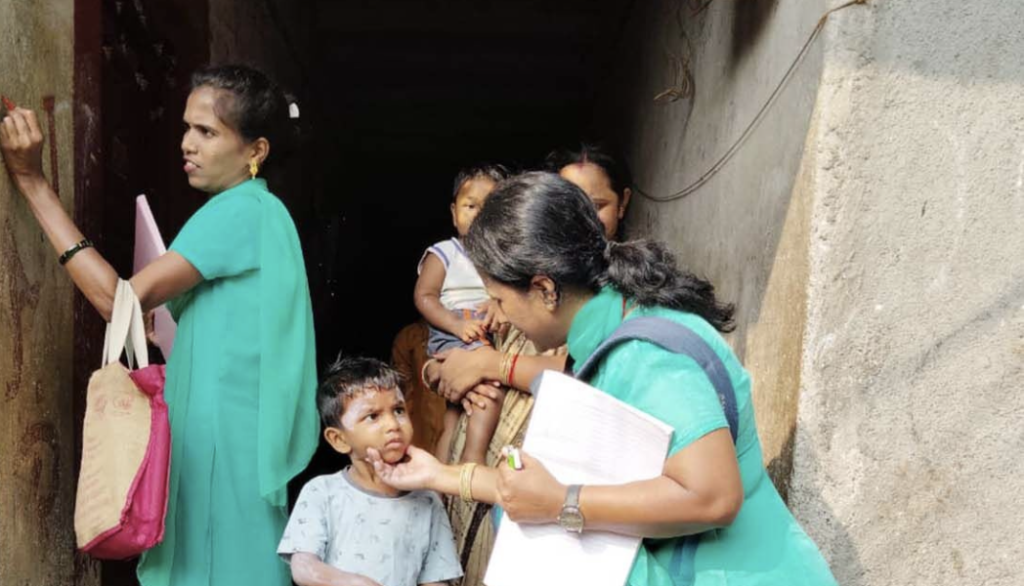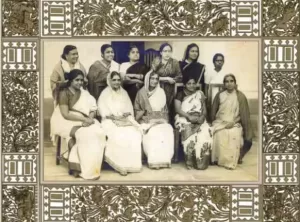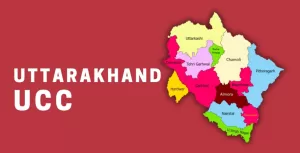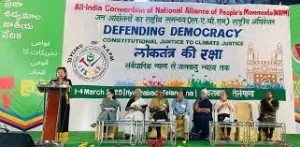Mumbai and Palghar: Suvarna Kamble (45), an accredited social health activist (ASHA) from Palghar, remembers a time when she brought a woman from Dhansar, a village in Palghar block of Palghar district, to a family planning clinic in Virar for a sterilisation procedure.
At 11 pm one night, the woman had called Kamble to report that her wound had begun to discharge a liquid that was sufficient to soak through the bedsheet she had been using to staunch the flow. At 4 am, her husband called to say that she was close to losing consciousness and the nearest hospital had turned them away.
Kamble spent the night awake with worry, planning her next steps. The first train from Dahanu Road to Saphale was at 4.55 am in the morning. She asked the woman’s husband to bring her to the primary healthcare centre (PHC) in Saphale on the train. “I convinced the nurse on duty to do her sutures again, at 5 am in the morning. The woman recovered immediately,” she told IndiaSpend.
Her job, as per the guidelines of the National Health Mission (NHM), only required her to refer the patient and to escort her to the location of the procedure. In actual practice, in addition to struggling to find facilities that are willing to admit the people she refers to, the frontline worker has to spend considerable money on transport and treatment out of her pocket, both for herself and the people she serves.
As per the revised NMH guidelines for 2022, there should be a sub district hospital for every one million population, and it should provide paediatric, gynaecological and obstetrics care. There is no district hospital in Palghar, however, and just two sub district hospitals, both of which are located in Dahanu block, to serve the population of 2.9 million. Therefore, she has to rely on the services of private hospitals to help her patients.
Situated between the Arabian Sea and the Sahyadri range 100 km north of Mumbai, Palghar was carved out of Thane district in 2014. Kamble, along with residents of Palghar and neighbouring Mumbai, Thane and Nashik, will cast her vote on May 20 for the general elections.
First point of call for the community
At a subcenter, an auxiliary nurse midwife (ANM) has a team of ASHAs under her. If a mid-level health practitioner (MLHP) is present, the sub centre becomes an Ayushman Arogya Mandir (AAM), explained the chief health officer (CHO) who is the MLHP of a sub centre attached to the Saphale PHC who wishes to remain anonymous. The number of ASHAs under the ANM depends on the population of the village.
This AAM is equipped to monitor blood pressure and blood sugar, screen for oral cancer and breast cancer, collect sputum samples of suspected tuberculosis patients, monitor the weight of pregnant women and newborn children, etc. A doctor from the Primary Healthcare Centre at Saphale (where the emergency suturing was performed) visits every week.
ASHAs have a list of 65 duties for which they receive incentives, including maintaining a record of all the married women and young children in their community, ensuring that expectant mothers get antenatal and postnatal checkups, monitoring the weight gain of children, administering oral rehydration salts to those who report diarrhoea-like symptoms, building awareness in their community about family planning practices, administering drugs for the control of vector-borne diseases, etc.
This requires Kamble to be on good terms with the people in the community. “Otherwise, no lady will tell me how much she ate, what her child ate, if he is sick or if her husband drinks,” she pointed out.
When she finds a person in need of medical attention, she accompanies them to the nearest hospital, which is a private facility. In extreme cases, she gets into a vehicle to take the patient and their family to Nair Hospital in Mumbai, a four-hour drive.
The cadre of ASHAs evolved from the Mitanin programme in Chhattisgarh. “They are supposed to be the link workers in the community, a liaisoning grassroots worker that takes healthcare to the doorstep of the community and who brings the people to the healthcare system,” said Dr Suparna Ghosh-Jerath.
Ghosh-Jerath is a nutrition researcher and programme head, nutrition, at The George Institute for Global Health, India who has worked with the Delhi State Health Mission for a World Health Organisation-funded project to develop a remodelled ASHA programme for better selection, recruitment, training of ASHAs and implementation of the programme.
As the emphasis of healthcare expanded to include prevention of non-communicable diseases, oral health, disability prevention, etc, the ASHAs’ duties expanded to deliver comprehensive care. Kamble told IndiaSpend that she enters data that she collects, ranging from alcohol use to birth weight, on 18 different portals. She also helps beneficiaries get Ayushman Bharat Health Authority (ABHA) IDs – which would allow them to access their health records digitally – and Ayushman Bharat cards for health insurance benefits under Pradhan Mantri Jan Aarogya Yojana.
In their current role ASHAs, being the link workers, should be equipped to understand the healthcare needs of the family they visit in totality, and then they need to know the proper referral system, explained Ghosh-Jerath. “She needs to know where to send a pregnant woman, whom to refer to if someone needs care for any particular condition, when to contact her ANM to ensure that the ANM’s workload is manageable.”
Officially, her work hours are 10 am to 2 pm thrice a week. However the ANM, who is also the ASHA facilitator at her subcenter, expects Suvarna to be available and ready to visit at a phone call’s notice all the time. Suvarna is considered an“honorary volunteer” by the NHM.
For this volunteer work, Kamble is paid an honorarium of Rs 2,000 from the centre and Rs 3,500 from the state of Maharashtra. The ASHAs’ honoraria do not reflect the tasks they do, according to Jayati Ghosh, professor of economics at Amherst University whose book “Never Done and Poorly Paid” highlights the issue of women’s care work being undervalued both at home and outside it.
“If performed properly, their jobs would involve working days of around 6-10 hours, maybe more, depending on the specific needs of women and children under their coverage,” she explained.
While ASHAs do not need to be educated beyond Grade VIII (although preference will be given to those who have passed Grade X), they are required to be literate and have computational skill. They also need other skills and competencies, which Ghosh-Jerath called “functional literacy”, to identify at-risk populations and become compassionate workers with excellent communication skills. They are not called upon to cure or treat a person, but they need to use the drug kits in their custody with proper training, retraining, care and caution, she added.
“It is their communication skills that are important to convince the community members to give a sample for testing and take pills for a disease, etc.,” explained the CHO.
Overworked and underpaid
In 2016, 600 children died in Palghar as a result of undernutrition. An ANM at a subcenter near Saphale proudly boasts that there are no severely malnourished children or anaemic women in her charge in 2024, except for one woman with sickle cell anaemia who requires blood transfusion. The ASHAs keep a close eye on all the children to ensure that they eat the right food and gain enough weight, she says.
If ASHAs can identify women who are likely to get postpartum haemorrhage or who are underweight at an early stage and send them to the hospital, it plays a huge role in reducing the infant mortality rate and maternal mortality rate, said Ghosh-Jerath. “Nutrition itself is an intervention that can prevent deaths,” she said. “45% of child mortality can be attributed to malnutrition directly or indirectly.”.
During the COVID-19 pandemic, ASHAs were asked to record every arrival of people to their village along with travel history, ensure that the visitors were quarantined, distribute medical kits and perform surveys door-to-door, measure oxygen saturation, and manage supply chain disruption due to lockdown measures in addition to their usual duties.
The WHO honoured them with the Global Health Leader Award in 2022 for their role in protecting and promoting health. However, within her community, Kamble was met with displeasure at that time. The people of her neighbourhood feared that they would contract the infection from Kamble, and would not let her enter the colony wearing her personal protective equipment.
Therefore, after spending the day going door-to-door with various medicines and testing kits, to protect her own family and neighbours, she would bathe in an enclosed space outside the colony where her husband would leave a bucket of water.
For this, she and the other ASHAs were paid an additional Rs 1,000 per month along with insurance that covered death and disability, which according to Kamble was pointless. “What is the use of getting money after I die? Our husbands will take that money and find themselves new wives.”
When the ASHAs in Palghar struck work along with their colleagues from Maharashtra, the employees of the PHC were left to their own devices. “We did not know how to inform the people of the CHO’s (a doctor) visit to the sub centre, did not know who was in need of home-based newborn care. We could not carry out immunisation camps without them. It was challenging,” recalls the CHO from Palghar.
“I don’t mean any disrespect, but I think the prime minister and the others do not know how much work we do,” laughed Kamble.
At the time of its launch in Maharashtra in 2008, the honorarium for ASHAs was two sarees a year, according to Kamble who volunteered despite the lack of pay. While they are paid an honorarium, they do not get a pension or any other retirement benefits.
ANMs, a cadre of nurses who used to be a community’s first point of contact with the healthcare system before ASHAs, are paid out of the centre’s health budget, whereas the ASHA’s incentives are paid by the District Level health Officer and have to be approved by the ANM and the sarpanch of the village. ANMs and other workers in the PHC are paid a fixed monthly salary and retire with a pension and several benefits.
“ASHAs have never been paid according to the actual work they do,” explained Jayati. “Recent additions to their workload by national and different state governments that are not even covered by the NHM have made the underpayment even greater,” explained Ghosh. At the PHC in Saphale, everyone agrees that ASHAs are not paid enough, and rarely ever paid on time.
Not only is the honorarium low, the ASHAs are asked to provide proof of all of their jobs in the form of photos to avail of the incentives. However, despite proof, authorities sometimes do not approve their payments, according to Kamble.
“Every monthly meeting I attend with the ANM is supposed to pay me Rs 150 as an incentive. If the ANM says I wasn’t there, I don’t get the incentive, even if I have proof,” she said.
Remember the Ayushman cards? The ASHA gets a sum of Rs 5 for every form she fills out. The process requires the generation of six one-time passwords that she generates on her own smartphone, which is not provided by the government. “I spend Rs 400 in a month on data charges, I get Rs 150 from the government for it,” said Kamble.
The solution is to pay them a fixed wage, like all government workers, according to Ghosh. “The system of “incentive payment” is not only offensive and degrading, but also results in very significant underpayment. It is also something that can be affected by budget cuts,” she added.
IndiaSpend has written to the Ministry of Health and Family Welfare, Maharashtra State Health Ministry and District of Palghar health officials to ask about the incentives paid to ASHAs, the requirement for ASHAs to own and operate smartphones, the tasks assigned to ASHAs outside the purview of the NHM and the impact of cuts to the NHM budget. This story will be updated when they respond.
ASHAs create demand for services, HWCs do not provide them
Under the non communicable disease programme, the government provides pills for diabetes and hypertension through subcenters and PHCs. ASHAs are tasked with bringing people for screening to the AAM or sub centre and get treated if they need to.
“We have only Telma 40 ( a drug used to treat hypertension) at our centre, which means people who need a different tablet (for hypertension) have no reason to come here,” explained Kamble. Her centre holds Yoga sessions once a month, and her performance is judged based on how many people she brings to these camps. The church nearby has a yoga camp every Saturday, so she has a hard time convincing people to come to hers.
The Ayushman Bharat cards she helped members of her community to acquire were not accepted by many hospitals they visited, which caused some consternation. Since then, the people she reaches out to for empanelling under the health insurance scheme have refused to go through with the process.
“Since ASHA workers rely on their reputation in their community, they personally suffer a setback every time they bring someone to a health facility and are turned away because of logistic issues,” said Ghosh Jerath.
To compensate for the shortfall of services in her centre, Kamble has to maintain a close relationship with the referral hospitals, blood banks and ambulance services in her area. When they are unable to deliver, she steps in, arranging for auto rickshaws to take women in labour to different hospitals in the city, sometimes as far as Mumbai. She has donated blood on so many occasions that Nair Hospital in Mumbai gave her a plaque for it on women’s day this year, along with 100 other women.
“I’ve had a passion for social work, and I do what I can for my community. I only wish that I can get the government to agree to give us a pension when we can no longer work for it,” she said.
(Courtesy: IndiaSpend, a non-profit online webportal that uses open data to inform public understanding on a range of issues, with the aim of fostering better governance and more transparency and accountability in governance.)




